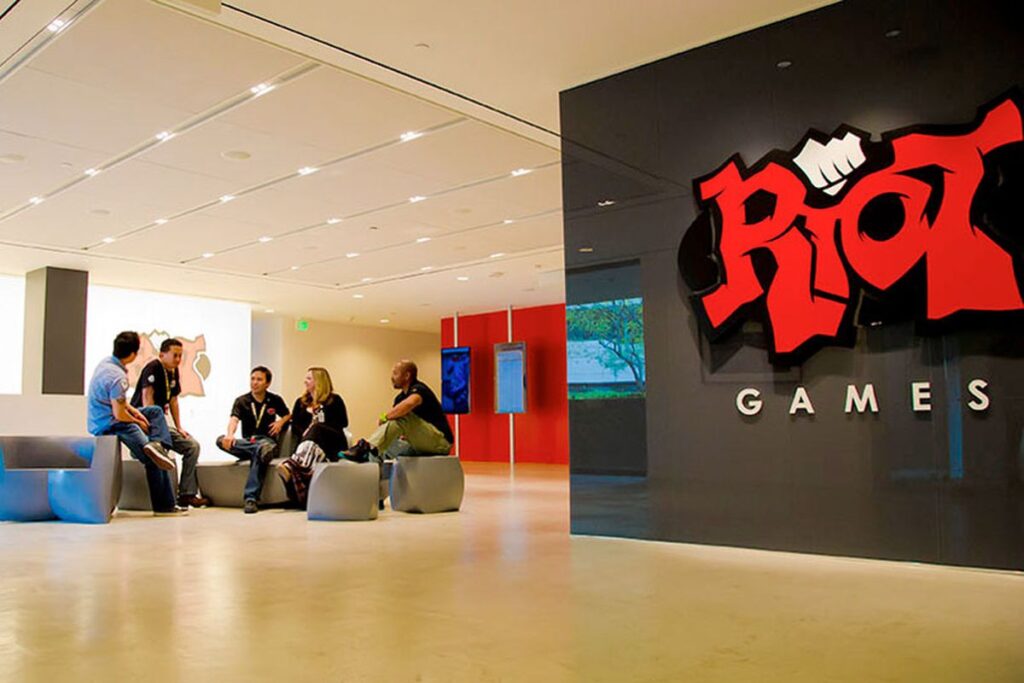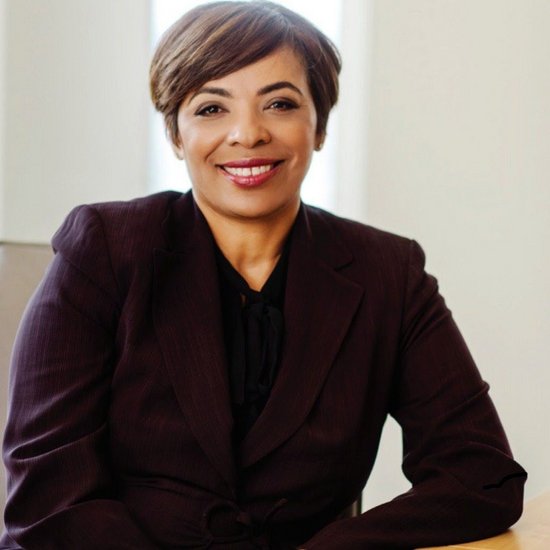
Riot Games was thrust into the spotlight for all the wrong reasons a year ago. Kotaku’s investigation into the League of Legends developer lifted the curtain on rampant sexism, along with a “bro culture” rife with “slanted hiring practices, chauvinism, [and] ball-tapping frat antics,” as reporter Cecilia D’Anastasio put it. The investigation, which was followed by a lawsuit against Riot current and former employees, set in motion a series of steps to address the toxic behavior in the workplace at Riot, including the appointment of Angela Roseboro as the company’s new Chief Diversity Officer.
Despite taking steps in the right direction, Riot Games filed a motion in May to block employees’ legal action against the company, forcing employees into private arbitration. This led to more than 150 staff staging a walkout from Riot’s LA office, marking the first time in game development history that such a protest took place. Then, in June, the California Department of Fair Employment and Housing filed an investigation enforcement action against the studio, forcing Riot to share its employee pay data to assist with an ongoing investigation into gender discrimination at the company.
Much like a game during its alpha phase, Riot’s internal struggles have revealed its make-up, warts and all. There is hope, however. Kotaku’s one-year follow-up indicates that “real progress” has been made, but there’s certainly a long road ahead for the studio. The website was in touch with 14 different Riot employees, all of whom were “optimistic about the future of Riot Games, even as some at the company disagree on how best to implement cultural change.”
“Has Riot done everything I would like them to do? No,” said one employee to D’Anastasio on condition of anonymity. “Has Riot put in significant investment and shown commitment to want to be better? Yes, I do believe that.”
Kotaku’s report goes into detail on the “simmering dissent” among the workforce when it comes to the course correction on diversity and inclusion. Some don’t believe that Riot leadership has done enough to erase the endemic sexism, while others are worried about “overcorrection.” Riot uses a third-party app called Blind to solicit employee feedback while keeping responses anonymous. That said, one source told Kotaku that Blind “was only used by a fringe amount of employees, and particularly by some opposed to so-called social justice warriors at their company.”
Based on its conversations with Riot employees, Kotaku came to the conclusion that about 15% of the Riot workforce is passionate about the steps being taken to erase sexism, while another 70% are merely on board or apathetic. The problem is that there’s another 15% that completely disagrees with the D&I emphasis. These are mostly men who “feel unnecessarily censored,” Kotaku said.
For its part, Riot claims that the timing of Kotaku’s report one year ago was merely coincidental, that its efforts to foster a more diverse and inclusive culture were already underway. Roseboro outlined the progress that’s been made recently on the official Riot blog.

Roseboro said that the six months since she’s joined Riot have been a “whirlwind,” and that she could tell employees were hurting but never lost their love for the company. Importantly, Roseboro said that D&I is now “infused into our people processes and systems.” And since she joined Riot, the company brought on two more women onto its 11-person leadership team (for a total of three), who help to oversee 12,000 hours of diversity training. Riot also started up employee discussion groups for marginalized demographics, partnered with Girls Who Code and the Reboot Representation Coalition and shifted its attitude towards job titles. Roseboro noted that Riot is now 22% female, which represents a 3% improvement over last year.
Change can be hard for any company, but shifting the culture of a 2,500-person organization is going to take some time. Roseboro said it can take five years to change a company’s culture. There’s clearly some D&I fatigue, or even resentment, from some of the workforce.
“Almost every AMA [ask me anything], I see one, two or three guys get up there and be like, ‘When can we stop talking about this?’” one employee told Kotaku, referencing discussions about sexism. Other sources told Kotaku that even Riot management would like to move on.
“Part of leadership’s messaging has been that we need to move on,” another employee noted. “If the goal is to move on, then building all of this infrastructure for people coming in is absolutely effective at making it a better place for joining the company. That doesn’t erase the fact that there are still people there, named in lawsuits for blocking women’s promotions . . . Asking us to move on isn’t a fair thing to do if these things are still happening. That’s sweeping it under the rug.”
Erin Lindsay, a recruiting manager at Riot, added, “I think that if you only focus on the things that really make you sad or upset you’re going to continue to be really, really sad or really, really upset. I can see that play out here, too. We are a corporation at the end of the day. We need to actually make cool things.”
Riot Games may be bearing the brunt of industry criticism these days, but the company’s fight against sexism is no isolated incident. As we’ve seen from International Game Developer Association (IGDA) surveys, the game development community is still overwhelmingly male and white.
The silver lining is that D’Anastasio’s steadfast reporting has brought D&I and the industry’s problems to the forefront. Just last week, Netflix’s Patriot Act With Hasan Minhaj aired a deep dive into the game industry’s labor issues, including its rampant mistreatment of women. D’Anastasio was interviewed during the episode about her reporting on Riot. The fact that Riot, and the game industry at large, are now in the mainstream discussion could be additional fuel for the D&I fire. This is an opportunity for the entire industry to continue to push for equal rights and equal pay.
So what can studios watching the Riot transformation learn? How can game companies stamp out sexism and foster inclusive cultures?
According to Nika Nour, executive director, International Game Developers Association Foundation (IGDAF), the first step is simply awareness and recognition that there is something to fix.
“The way studios can combat sexism and misogyny is to recognize and identify that these problems exist,” she told GameDaily. “Sexism and misogyny discourage diverse new talent and aspiring leaders from entering the video game workforce. The IGDAF believes that diverse, passionate voices are necessary contributions to changing the video game industry for the better. Women and minorities still make up a small portion of employees in leadership in the video game industry. The IGDAF believes that every employee should have a right to a safe and habitable work environment.”
As for any portion of the workforce that might disagree with steps to foster D&I, Nour said that’s where leadership needs to be resolute in its beliefs and company policy. Leadership shouldn’t be discouraged by vocal minorities that could potentially even be contributing to the problem — even if they aren’t aware of their actions.
“Any form of harassment or harmful behavior is inappropriate and has no place in the video game industry. It’s important to remember that sexism often presents itself as unconscious bias, so leaders need to be aware and vigilant because these attitudes aren’t always overt,” Nour continued. “Studios and leaders must look at adopting anti-discrimination and harassment policies in their workplace. Developing diversity committees to engage in listening sessions in the workforce, such as mentoring opportunities for underrepresented communities, LGBTQ recruitments, and gender inclusion networking events are a few examples of first-step solutions leaders can enforce.”
Liz Prince, Business Manager for UK-based games recruitment firm Amiqus and founder of Putting The G Into Gaming, agrees that unconscious bias can be an insidious problem.
“When thinking of recruiting for a role, we often look at who has done the role before and who has been successful at it, but we have to be careful about perpetuating the same prototype,” she commented to GameDaily. “So we have to be especially careful about using the same benchmarks, tests and judgments because they could be excluding people from important roles. There are ways of eliminating this ‘unconscious bias’, including taking all personal information off a CV before you consider it, making decisions on who to interview based on your job description, interviewing a diverse range of people from different backgrounds.”
Ongoing sexism, harassment and the gender pay gap can be a significant issue when it comes to retention. After all, if women are mistreated and underpaid, why would they stick around? This will continue to be an uphill battle for Riot and the global games community.
“This is a huge topic and dependent so much on our company culture. If we’re looking to retain all of our talent, studio culture has to recognise that women and men experience the workplace in very different ways,” Prince advised. “By establishing advocacy groups, you can give women and other minorities a voice. That doesn’t mean having an all-female group however; it’s about having diverse people come together and focus on the challenges in the workplace from a female perspective, shaping the inclusive culture where colleagues can help women to shine and thrive through their support for inclusive policies and behaviour.
“One big area of policy is flexible working. The reason this is so important to think about is the impact it can have on opening up the talent pipeline for you. ‘Beer Friday’ is also a big thing in games, but how inclusive is that as a concept? Big or small, make cultural change to create a gender-neutral, inclusive environment where people want to thrive and stay.”
As important as retention is, attraction is even more critical. Game studios can’t hire more women if they aren’t applying because they’ve been put off by the industry’s problems or a particular company culture.
“This is probably the biggest challenge, given that most young girls think that a career in STEM isn’t for them,” lamented Prince, who also spoke on a panel about D&I at GameDaily’s London show.
Studios are going to have to step up their game if they’re truly looking to change their ways.
“If you’re serious about a diverse workforce, make it clear on your website and on social channels — not just to your players, but promoting your brand as an employer,” said Prince. “When you’re hiring, decide what you’re looking for in that job role and person and focus only on the necessary requirements. Remember that women will typically want to meet every requirement on a job description before they apply; men have a lesser threshold of meeting around 60% of the requirements before they’ll get their CV ready for you.”
Prince added that it’s a great idea to also “check for gender-coded language in your communications.
“Placing an emphasis on ‘growth’, ‘collaboration’ and ‘inclusion’ – rather than terms such as ‘confident’, ‘expert’ and ‘ninja’ – will attract women as well as men,” she explained, noting that offering flexible hours for those who have caring responsibilities is a plus.
Time will tell if Riot’s experience can serve as an example for the rest of the industry, but Roseboro seems committed.
“Progress on D&I is about driving meaningful change, not ‘checking boxes.’ The passion and commitment from Rioters over the past year has been phenomenal. All the work that’s been done has been impressive and will serve as a strong foundation for us to continue to build on,” she said.
 GameDaily.biz © 2025 | All Rights Reserved.
GameDaily.biz © 2025 | All Rights Reserved.